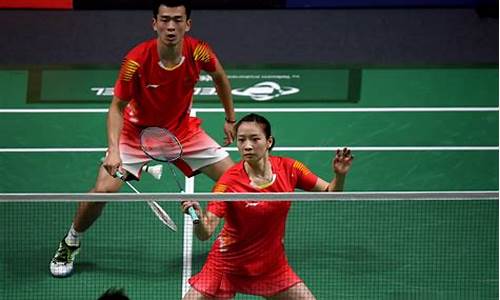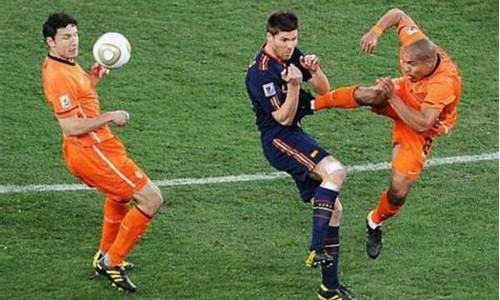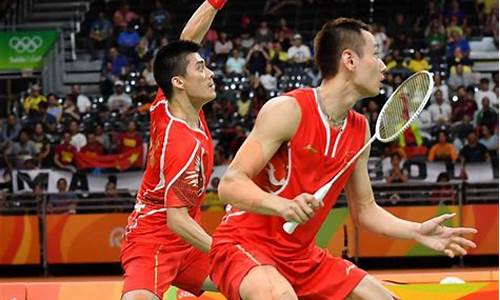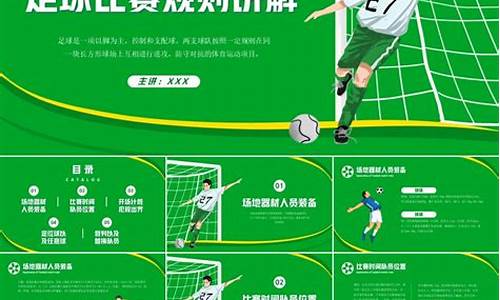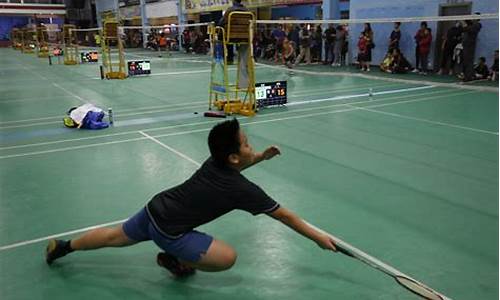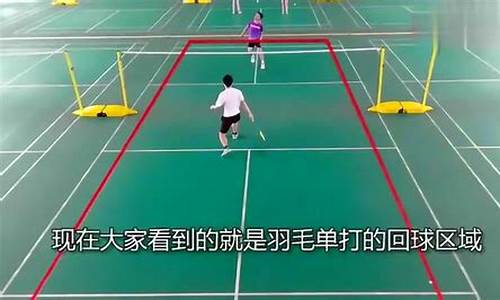您现在的位置是: 首页 > 篮球比赛 篮球比赛
star 羽毛球_star羽毛球拍怎么样
ysladmin 2024-06-07 人已围观
简介star 羽毛球_star羽毛球拍怎么样 我非常愿意为大家解答关于star 羽毛球的问题。这个问题集合包含了一些复杂而有趣的问题,我将尽力给出简明扼要的答案,并提供进一步的阅读材料供大家深入研究。1.哪位英语高手用英语简介一下羽毛球?2.匡威197
我非常愿意为大家解答关于star 羽毛球的问题。这个问题集合包含了一些复杂而有趣的问题,我将尽力给出简明扼要的答案,并提供进一步的阅读材料供大家深入研究。
1.哪位英语高手用英语简介一下羽毛球?
2.匡威1970s和all star的区别
3.International Badminton是什么意思
4.Benhill羽拍的介绍
5.羽毛球是谁发明的?谢谢了,大神帮忙啊
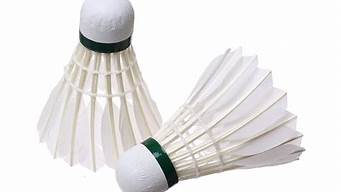
哪位英语高手用英语简介一下羽毛球?
I INTRODUCTION
Badminton, game for two or four players using lightweight rackets and a shuttlecock, a cork ball fitted with stabilizing feathers. Players hit the shuttlecock back and forth over a net, trying to keep it from hitting the ground. Some people play badminton outdoors on a level grassy area or beach. However, tournament-level badminton is played indoors on a specially marked court.
Badminton’s governing body, the International Badminton Federation (IBF), has about 140 member nations. The IBF estimates that about 200 million people play the game worldwide and that more than 1,000 players participate in international competition. Badminton’s growth accelerated after the game’s debut as a medal sport during the 1992 Summer Olympic Games. China, Denmark, Indonesia, Japan, Malaysia, and South Korea are just a few of the countries where badminton is popular.
II PLAYING AREA
International rules state that an indoor badminton court must be rectangular, with white lines marked on a level wooden floor or on a special mat that is rolled onto a level playing surface. A singles court is 44 ft (13.41 m) long and 17 ft (5.18 m) wide. For doubles, alleys 1 ft 6 in (0.46 m) wide along the two longer sides of the court come into play, making the court 20 ft (6.10 m) wide. Because many shots fly high into the air, there must be clearance of at least 30 ft (9.14 m) above the court. A net stretched across the middle of the court has a top edge set to a height of 5 ft (1.52 m) at the center and 5 ft 1 in (1.55 m) at the posts.
III EQUIPMENT
Badminton rackets weigh between 3.5 and 5 oz (99 and 141 g) and consist of a leather or terrycloth handle; a long, thin shaft; and a stringed area called the head. Official rules limit the total length of a racket to 26.75 in (67.95 cm). The head of a racket measures 11 in (28 cm) in length and 8.6 in (21.8 cm) in width and is strung with synthetic nylon or gut at between 25 and 35 lb (11.3 and 15.9 kg) of tension. Early rackets were made of wood, but badminton rackets are now commonly made of aluminum, boron, graphite, and titanium.
Tournament-quality shuttlecocks, also called shuttles or birdies, weigh 0.2 oz (5.7 gm) and consist of 16 goose feathers that protrude from one side of a ball-shaped cork base. Most shuttles used by casual players are plastic and have synthetic feathers. Both types of shuttles are 2.5 in (6.4 cm) long. When the shuttlecock is in the air, its aerodynamics cause it to spin so that when players hit it, they almost always strike the cork, not the feathers.
IV SERVICE AND PLAY
Play begins with a serve from a service area on the right-hand side of the court to a receiver in a diagonally opposite service area across the net. To serve, the server stands behind the service line and strikes the cork base of the shuttle in an underhand motion. The receiver must then return the shuttle before it hits the ground, and the players hit the shuttle back and forth until one side fails to return it.
Play ends when the shuttle hits the ground on one side of the court or when one player makes a fault, or error, such as hitting the shuttle into the net or out of bounds. Specific faults for servers include striking the feathers of the shuttle first or serving overhand. The receiver can be faulted for not being within the service court, for not having both feet on the floor when receiving, and for moving before the serve is made.
During play, faults include hitting the shuttle into the roof or lights, hitting it through the net, double-hitting or slinging a shot, touching the net, playing a shot by reaching over the net, and allowing the shuttle to hit the player’s body. Unsportsmanlike conduct—such as intentionally distracting an opponent—will also earn a player a fault.
V SCORING AND OFFICIALS
Points are scored when the opponent fails to return the shuttle, hits it out of bounds, or earns a fault. Points only count for the server (or serving side in doubles), so keeping the service privilege is an important part of the game. If the server loses a rally or makes a fault, the service privilege passes to the opponent. In doubles, this immediate loss of service occurs only at the start of the game. After this first loss of service, each team receives two chances to hold serve. When the first teammate loses serve, the partner serves. If the partner loses serve, the opposing team takes over.
In men’s singles, men’s doubles, women’s doubles, and mixed doubles, the first side to score 15 points is the winner. Women’s singles games are played to 11 points. If the score is tied at 14-14 (or 10-10 in women’s singles) a system called setting settles the outcome. The first side that reached 14 (or 10) elects either to play through, meaning that the next side to win a point wins the game, or to set the game to three additional points, meaning that the first side to reach 17 points (or 13 in women’s singles) wins the game. Each badminton match is a best-of-three-games contest. Average matches last about 45 minutes, but professional matches can last more than 2 hours.
Badminton tournaments involve a number of officials. A referee supervises the tournament organization while an umpire controls each match. Aided by a service judge, the umpire keeps score and rules on faults during play. Up to ten line judges rule on whether particular shots have landed in or out of the court.
VI SKILLS AND STROKES
Badminton requires speed, strength, power, agility, and nerve. Players must move quickly from side to side and back and forth, and stamina is important.
There are six key badminton strokes: the serve, drive, net shot, smash, lift (or lob), and clear. To hit these strokes, players use either a forehand or a backhand grip, depending on court positioning. On the forehand the forefinger acts as a lever and creates power and direction for the stroke. For the backhand the thumb creates this power and direction while placed along the back of the handle.
Many players aim the serve toward the centerline of the opposite service box. This technique limits the angle of the opponent’s return shot. Sometimes players use long, high serves to force opponents to the back of the court. Players also make specialty serves, such as flick serves that barely clear the net or drive serves that are hit down the sideline of the service area, to catch opponents out of position.
Once play has started, players tend to hit straight, low-flying shots called drives. When the shuttle remains close to the center of the court, net shots can be a good option. Net shots can be hard-hit or delicate. They are aimed at the front area of the opponent’s court, forcing the opponent to play the shot close to the net.
If the opponent manages to return a net shot, the return must be hit high to clear the net. This gives the player a chance for a smash—the deadliest attacking stroke in badminton. A smash is hit to the floor so forcefully that the opponent has no chance to return the shuttle before it hits the ground. The hardest smash has been recorded at more than 160 mph (260 km/h).
Players also use two looping strokes that knock the shuttle high and deep. The lift, or lob, is an offensive stroke made from the middle or front of the court. This shot sends the shuttle in a high arc above the opponent’s reach, forcing the opponent to the back of the court. The clear is a similar stroke, but it is used for defensive purposes when players find themselves out of position. The high arc gives players time to return to the middle of the court and to prepare for another rally.
VII COMPETITION
Many badminton enthusiasts play in clubs or at local and regional levels. Top players compete in the World Grand Prix series, an international circuit of tournaments sanctioned by the IBF.
The world championships are badminton’s biggest event and are held every two years. The tournament features five competitions: men’s and women’s singles, men’s and women’s doubles, and mixed doubles. The world championships are always preceded the previous week at the same venue by the Sudirman Cup world mixed team championships, where contests between nations are decided by five matches: men’s and women’s singles, men’s and women’s doubles, and mixed doubles.
Two of badminton’s most exciting events are the men’s Thomas Cup and the women’s Uber Cup. These world team championships, which take place every two years side by side at the same time and at the same venue, have continental qualifying rounds. Contests are staged in a round-robin format with knockout finals at both the qualifying stages in February and the grand finals in May. Thomas Cup and Uber Cup contests consist of three singles and two doubles matches.
Other major events are the European championships, held every two years, and the Olympic Games and the Commonwealth Games, both held every four years.
The IBF, located in Cheltenham, England, regulates all these events and is the sport’s governing body. Representatives from Canada, Denmark, England, France, Ireland, The Netherlands, New Zealand, Scotland, and Wales founded the organization in 1934. Today the IBF has about 140 member nations.
VIII HISTORY
Badminton traces its beginnings to a game played thousands of years ago in Asia. The modern form of the sport was refined in Britain, but it is popular in countries all over the world.
A Beginnings
Badminton evolved from a Chinese game of the 5th century bc called ti jian zi that involved kicking the shuttle. A later version of the sport was played in ancient Greece and India with rackets rather than with feet. A similar game called shuttlecock, or jeu de volant, appeared in Europe during the 1600s.
British army officers brought a revised version of the game back to Britain from India in the mid-19th century. In 1873 the duke of Beaufort introduced the game to royalty at his country estate, Badminton House, and the sport became known as badminton. Four years later the Bath Badminton Club was founded. The version played by its members forms the basis for today’s game.
B Growth in Popularity
Badminton soon spread beyond Britain to the rest of Europe and to countries throughout the world. It became especially popular in Asia and North America. The only major change through the years was in playing equipment, as lightweight rackets made of aluminum, boron, graphite, and titanium gradually replaced wooden models.
During and after World War II (1939-1945), American badminton players came to prominence in international play. In the 1940s David Freeman was recognized as the world’s best player. He won seven United States singles titles (1939-1942, 1947, 1948, 1953) and the All-England singles title (1949). He remained unbeaten in singles competition from the age of 19 until he retired at age 33. American-born player Judy Devlin Hashman dominated the women’s game during the 1950s and 1960s; she became a naturalized citizen of Britain in 1970. England’s Gillian Gilks dominated women’s singles, women’s doubles, and mixed doubles play during the early 1970s.
Badminton’s first world championships were held in 1977. Denmark’s Flemming Delfs and Lene Koppen won the men’s and women’s singles titles, respectively. Since then, East Asian nations—primarily China and Indonesia—have dominated professional badminton. In both countries, badminton is as popular as basketball is in the United States or is in Britain. Spectators at matches typically sing, chant, and cheer for their favorite players or teams.
C Recent Developments
Individuals from China and Indonesia have won numerous world championship titles. Men’s singles world champions include Rudy Hartono (1980) of Indonesia and Yang Yang (1987, 1989), Zhao Jianhua (1991), and Sun Jun (1999) of China. Women’s world champions include Indonesia’s Susi Susanti (1993) and China’s Ye Zhaoying (1995, 1997).
The most noted doubles player is South Korean men’s star Park Joo Bong, who won an Olympic gold medal in men’s doubles in 1992 and a silver medal in mixed doubles in 1996.
Denmark is also a badminton powerhouse, with players such as 1996 men’s Olympic gold medalist Poul-Erik Hoyer-Larsen, 1997 men’s world champion Peter Rasmussen, and 1999 women’s world champion Camilla Martin.
匡威1970s和all star的区别
姓名:赵婷婷(Zhao Tingting)
性别:女
籍贯:江苏南通
生日:1982.11.28
身高:1.68米
体重:62公斤
项目:羽毛球
中国近年来涌现出来的一位双打新秀,在女双和混双上成绩上升很快,有望成为中国第二个“葛菲”。
1999年,赵婷婷跨进国家队的大门。翌年11月,在广州举行的世青赛上获得女双亚军,出色地完成了国际赛场上的处女作。同年底,赵婷婷被选入国家一队。
亚运会后赵婷婷改和魏轶力配对,魏轶力身材高大,具有很强的进攻实力,赵婷婷速度快、进攻凶狠,两人组合已跻身中国女双三甲之列。在女双频传捷报的同时,赵婷婷和男双名将陈其遒在混双赛场中也一路顺风已成为仅次于奥运会、世锦赛双料冠军张军/高凌的中国第二混双组合。
2004年尤伯杯冠军成员
2004年亚洲锦标赛八强
2004年日本公开赛亚军
2004年全英公开赛四强
2004年瑞士公开赛四强
2003年中国公开赛四强
2003年香港公开赛四强
2003年德国公开赛八强
2003年丹麦公开赛四强
2003年新加坡公开赛四强
2003年世界锦标赛亚军
2003年日本公开赛亚军
2003年日本、瑞士公开赛女双亚军、混双四强,泰国公开赛女双、混双冠军,全英公开赛混双亚军;
2002年中国、马来西亚公开赛女双亚军,全英公开赛、亚锦赛女双、混双四强,丹麦、法国公开赛女双冠军,中国公开赛混双亚军,法国公开赛混双亚军;
2001年中国公开赛女双四强,亚锦赛女双四强,新加坡公开赛女双亚军。
/star/zhao_tingting/
International Badminton是什么意思
一九七零更加板正坚挺,allstar是松垮慵懒的类型。匡威一九七零s的鞋头要比allstar的鞋头稍微宽大圆润一点,而且底要比它厚一点,前者的颜色底部类似于黄白,而后者的鞋底颜色类似于纯白。
另外就是一九七零在鞋子的后面部位有两条明显的白色线条,而后者却没有,一九七零的外侧鞋面线条看起来也比allstar更长,但是后者比较短,看起来更加逼近鞋头部分,所以一九七零看起来更加板正坚挺,而allstar确是松垮慵懒的类型。鞋垫加厚的设计同样是一九七零s的特有标志。
Converse产品分为四个系列--Star and Chevron:主打篮球鞋,这系列的特征就是在鞋面的两侧有个星星加箭头的标志。
JACK PURCELL:俗称开口笑(得名于上世纪杰出的羽毛球运动员Jack Purcell先生);ALL STAR也称Chuck Taylor(得名于上世纪20年代伟大的篮球运动员Chuck Taylor先生,为了纪念他对篮球运动与Converse品牌的推动,Converse以他的名字命名了自己销量最大的品牌);ONE STAR:标志是只有一颗星星。
Benhill羽拍的介绍
International Badminton国际羽毛球
相关知识:
International Badminton Federation国际羽毛球联合会
International Badminton Competitions国际羽毛球比赛
International Badminton Federation ( IBF )国际羽毛球联合会 ( IBF ), 国际羽联
international badminton champion-ships国际羽毛球锦标赛
The kidnapping caused an international incident.这一事件引起了国际纠纷。
The country violated the international agreement.这个国家违反了国际协议。
That is a great international question of the day.那是当代的一个重大国际问题。
The cast of the play included a international star.这个剧的演员名单中有一位国际明星。
The company is an international trader in grain.这家公司是国际粮食贸易公司。
It is a report on the international situation.这是一篇有关国际形势的报告。
I think international calls are very expensive.我认为国际电话费用很高。
国际羽联世界锦标赛,通常称世界羽毛球锦标赛,是一项由国际羽毛球联合会组织的羽毛球单项锦标赛事,以之为世界顶尖的羽毛球选手加冕。世界羽毛球锦标赛是国际羽毛球联合会主办的世界最高水平的羽毛球单项锦标赛。
羽毛球是谁发明的?谢谢了,大神帮忙啊
邦喜尔Bhill是金祥臻公司旗下的品牌,behill的羽毛球拍上市时间主要集中在2007年、2008年,因为在2007年之前金祥臻主推另外一个品牌邦顿Benton。07年以后金祥臻就全力打造behill这个品牌了。 2008年上市的behill羽毛球拍的分类有以下3个: 1.维真系列(Virgin Series) 这个系列的羽毛球拍型号有: Virgin X8 Virgin X6 Virgin A6 Virgin A3 Virgin B8 Virgin B6 Virgin B3 Virgin C7 Virgin C3 Virgin F15 Virgin F16 Virgin F17 Virgin F18 Virgin F19 Virgin F20 Virgin F98 Virgin F99 Virgin F6 Virgin F7 2.战鹰系列(Intrepid eagle series) 这个系列的羽毛球拍型号有: Intrepid eagle V7 Intrepid eagle V5 Intrepid eagle V3 Intrepid eagle X7 Intrepid eagle X5 Intrepid eagle X1 Intrepid eagle A11 Intrepid eagle A1 Intrepid eagle B7 Intrepid eagle B11 Intrepid eagle B1 Intrepid eagle C8 Intrepid eagle C11 Intrepid eagle C1 Intrepid eagle F77 Intrepid eagle F10 Intrepid eagle F11 Intrepid eagle F1 Intrepid eagle F2 3.星耀系列(Super star series) 这个系列的羽毛球拍型号有: Super star V8 Super star V5 Super star V2 Super star A5 Super star A2 Super star B5 Super star B2 Super star C9 Super star C5 Super star C2 Super star F12 Super star F5 Super star F3 Super star 007 Super star 005 Super star 001 Super star F88 Super star F89 Super star F21 Super star F22 Super star 23 2007年上市的behill羽毛球拍的分类有: 1.彩虹系列(Rain bow series) 这个系列的羽毛球拍型号有: Rain bow 775 Rain bow 735 2.战神系列(Mars series) 这个系列的羽毛球拍型号有: Mars 768 Mars 778 3.北斗星系列(Charle's wain series) 这个系列的羽毛球拍型号有: Charle's wain 765 Charle's wain 775 4.金粉世家系列(Gentlefolk series) 这个系列的羽毛球拍型号有: Gentlefolk 712 Gentlefolk 722 5.竹之魂系列(Bamboo series) 这个系列的羽毛球拍型号有: Bamboo 1000 6.王者系列(imperatorial series) 这个系列的羽毛球拍型号有: imperatorial 785 7.未来战士系列(Future Fighter series) 这个系列的羽毛球拍型号有: Future Fighter 705 Future Fighter 715 Future Fighter 725 至于具体的特点你要看不同型号的具体说明了,写出来就很长了,你可以去逸贝网看看。 /brand-24-c0.html
希望采纳
据有关资料表明,最早出现有关羽毛球运动的文字记载是法国著名画家乔丹(1699-1779)所画的一幅题为“羽毛球”(The shuttle coack)油画。画中的一名少女 ,手握穿有网弦的羽毛球拍,球由球托插有七根不同颜色的羽毛所制成。 传说日本早在14-15世纪时,已出现了一种两个人用木制球拍,将插上羽毛的樱桃核当做球来回对击的游戏。这种运动很快传到了欧洲和亚洲其他国家。但因这种球不坚固耐用,飞行速度又太快,所以虽风行一时却很快就又消声匿迹了。 此后,又有类似羽毛球的游戏方式相继在印度和俄国出现,印度称此游戏方式为“普那”,它是用绒线缠成球形,上插羽毛,用木拍对击。俄国称其为“伏朗”。用球和我们现在的毽子非常相似。 由此可见,羽毛球运动的起源与类似“毽子板”的游戏有着密切的联系。由于国家.民族.文化以及语言的差异,对原始羽毛球运动名称的称呼就有所不同。所以,目前世界上对于这项究竟始于何时何地仍众说纷纭。但对于现在羽毛球运动名称的说法却基本一致。1873年,在英国格洛斯特郡的伯明顿镇(BADMINTON)有一位叫鲍弗特的公爵,一次在家中宴请宾客,恰逢下雨,客人只得聚在客厅,时间一长,大家都感到乏味,当时,有位从印度退役的英国军官,将其在印度孟买见到的“普那’向大家作了介绍,于是大家就在大厅内进行这种羽毛球的游戏。因这项活动极富趣味性,很快就风行起来。由于这项活动诞生在伯明顿,有人就提议以这个庄园的名称命名了这项运动,所以,英语中羽毛球叫做“BADMINTON”。原来鲍弗特公爵的庄园现在也改名为“羽毛球馆”以示纪念,并陈列着19世纪中业最初的羽毛球拍和球。那时的活动场地是葫芦形,两头宽中间窄,窄处挂网,直至1901年才改作长方形。 1877年,第一本羽毛球比赛规则在英国出版。 1893年,在英国成立了世界上第一个羽毛球协会。1899年,该协会举办了第一界"全英羽毛球锦标赛"(All Englang Badminton Champinships)"这就是自1899年起在英国伦敦温布利体育中心举行的传统性,非正式世界羽毛球锦标赛. 此后,羽毛球运动从不颠诸岛流传到斯堪的纳维亚和英联邦各国,20世纪初流传到亚洲、美洲、大洋洲,最后传到非洲. 随着这项运动在世界上开展的国家越来越多,1934年成立了"国际羽毛球联合会",总部设在伦敦.1939年国际羽毛球联合会通过了各会员国共同遵守的<<羽毛球竞赛规则>>. 从本世纪20年代到40年代这个时间,欧美国家的羽毛球运动发展很快.特别是英国和丹麦,历次重大国际比赛的桂冠几乎都被他们所垄断.其次,是美国和加拿大也具有相当高的水平. 1948-1949年举行了的首届世界男子羽毛球团体锦标赛--“汤姆斯杯”赛,马来西亚队击败了美国、英国和丹麦等强队荣获冠军,从而开辟了亚洲人称雄国际羽坛的时代。 50年代亚洲羽毛球运动发展较快,特别是马来西亚涌现出了不少优秀选手,蝉联了1951年和1955年之间所举行的两届汤姆斯杯赛冠军。同时在全英锦标赛中获男子单、双打的冠军。 50年代末,印度尼西亚羽毛球队在国际羽坛开始崛起,他们在学习欧洲选手的技术与打法的基础上有所创新,加快了羽毛球场上的速度和对落点的控制,使羽毛球技术水平提高到了一个新的阶段。在第4届汤姆斯杯赛中一举击败马来西亚队而夺得冠军。在60年代和70年代,印尼队的技术水平(除中国以外)在国际羽坛一直处于遥遥领先的地位,从第4届到第11届的汤姆斯杯赛,除第7届被马来西亚队获得外,其余全被印尼队所拥有,并且几乎垄断了在此期间的全英锦标赛的男子单、双打的冠军。 在女子方面,50年代中期至60年代初,美国占据世界的优势,连续三届获得世界女子团体比赛(尤伯杯赛)的冠军。60年代后期至70年代,世界的优势转向日本。 1981年5月国际羽联重新恢复了我国在国际羽联的合法席位,从此揭开了国际羽坛历史上新的一页,进入了中国羽毛球选手称霸国际羽坛的辉煌时期。 在1988年汉城奥运会上,羽毛球第一次进入奥运大家庭,被列为表演项目。1992年巴塞罗那奥运会列为正式比赛项目,设男女单打和男女双打四块金牌。1996年的亚特兰大奥运会上,又增设了混合双打
好了,今天关于“star 羽毛球”的话题就讲到这里了。希望大家能够通过我的介绍对“star 羽毛球”有更全面、深入的认识,并且能够在今后的实践中更好地运用所学知识。
